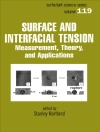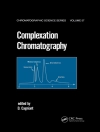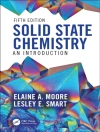In an age of global industrialisation and population growth, the area of energy is one that is very much in the public consciousness. Fundamental scientific research is recognised as being crucial to delivering solutions to these issues, particularly to yield novel means of providing efficient, ideally recyclable, ways of converting, transporting and delivering energy.
This volume considers a selection of the state-of-the-art materials that are being designed to meet some of the energy challenges we face today. Topics are carefully chosen that show how the skill of the synthetic chemist can be applied to allow the targeted preparation of inorganic materials with properties optimised for a specific application.
Four chapters explore the key areas of:
- Polymer Electrolytes
- Advanced Inorganic Materials for Solid Oxide Fuel Cells
- Solar Energy Materials
- Hydrogen Adsorption on Metal Organic Framework Materials for Storage Applications
Energy Materials provides both a summary of the current status of research, and an eye to how future research may develop materials properties further.
Additional volumes in the Inorganic Materials Series:
Molecular Materials
Functional Oxides
Porous Materials
Low-Dimensional Solids
表中的内容
Inorganic Materials Series Preface.
Preface.
List of Contributors.
1 Polymer Electrolytes (Michel B. Armand, Peter G. Bruce, Maria Forsyth and Bruno Scrosati).
1.1 Introduction.
1.2 Nanocomposite Polymer Electrolytes.
1.3 Ionic Liquid Based Polymer Electrolytes.
1.4 Crystalline Polymer Electrolytes.
References.
2 Advanced Inorganic Materials for Solid Oxide Fuel Cells (Stephen J. Skinner and Miguel A. Laguna-Bercero).
2.1 Introduction.
2.2 Next Generation SOFC Materials.
2.3 Materials Developments through Processing.
2.4 Proton Conducting Ceramic Fuel Cells.
2.5 Summary.
References.
3 Solar Energy Materials (Elizabeth A. Gibson and Anders Hagfeldt).
3.1 Introduction.
3.2 Development of PV Technology.
3.3 Summary.
Acknowledgements.
References.
4 Hydrogen Adsorption on Metal Organic Framework Materials for Storage Applications (K. Mark Thomas and Wadysaw Wieczorek).
4.1 Introduction.
4.2 Hydrogen Adsorption Experimental Methods.
4.3 Activation of MOFs.
4.4 Hydrogen Adsorption on MOFs.
4.5 Conclusions.
Acknowledgements.
References.
Index.
关于作者
Professor Duncan Bruce graduated from the University of Liverpool (UK), where he also gained his Ph D. In 1984, he took up a Temporary Lectureship in Inorganic Chemistry at the University of Sheffield and was awarded a Royal Society Warren Research Fellowship. He was then appointed Lecturer in Chemistry and was promoted Senior Lecturer in 1994, in which year he became co-director of the Sheffield Centre for Molecular Materials. In 1995, he was appointed Professor of Inorganic Chemistry at the University of Exeter. Following the closure of Exeter’s chemistry department in 2005, Professor Bruce took up his present position as Professor of Materials Chemistry in York. He is currently Chair of the Royal Society of Chemistry Materials Chemistry Forum. His current research interests include liquid crystals and nanoparticle-doped, nanostructured, mesoporous silicates. His work has been recognized by various awards including the British Liquid Crystal Society’s first Young Scientist prize and the RSC’s Sir Edward Frankland Fellowship and Corday-Morgan Medal and Prize. He has held visiting positions in Australia, France, Japan and Italy.
Dr. Richard Walton, who was also formerly based in the Department of Chemistry at the University of Exeter, now works in the Department of Chemistry at the University of Warwick. His research group works in the area of solid-state materials chemistry and has a number of projects focusing upon the synthesis, structural characterization and properties of inorganic materials.
Dermot O’Hare is Professor in the Chemistry Research Laboratory at the University of Oxford. His research group has a wide range of research interests. They all involve synthetic chemistry ranging from organometallic chemistry to the synthesis of new microporous solids.
Duncan Bruce and Dermot O’Hare have edited several editions of ‘Inorganic Materials’ published by John Wiley & Sons Ltd.












